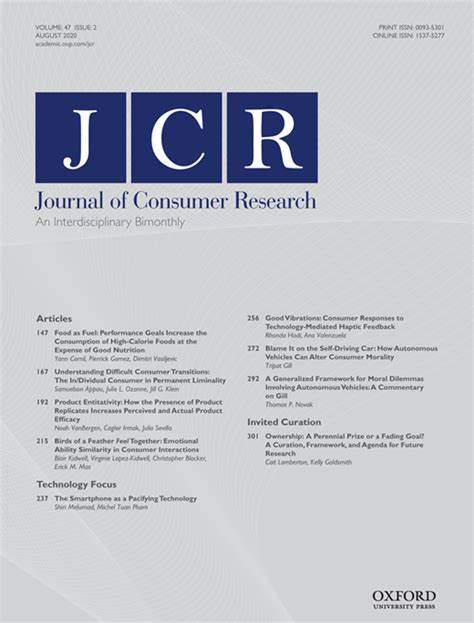何时允许数字审查?对话规范
IF 6.4
1区 管理学
Q1 BUSINESS
引用次数: 0
摘要
人们如何决定哪些内容应该被审查,哪些不应该被审查?七项研究调查了有关用户生成内容的数字审查心理。研究 1 采用归纳法,确定了三个维度--内容、意图和结果--消费者认为应该根据这三个维度对用户生成的内容做出审查决定。尽管目前流行的做法是基于内容的数字审查决定--即根据焦点内容是否包含负面的、具体的属性(如淫秽语言和暴力)进行审查--人们对审查决定的接受程度部分取决于对创作者意图的考虑程度("意图敏感假说";研究 2A-2D),即使不审查会产生负面影响。目前的研究认为,这种效应源于人们相信,当网络平台对用户生成的内容做出审查决定时,他们应该遵守对话规范。因此,在不那么符合会话规范的情况下,人们表现出的意图敏感性较低--例如,当平台用于专业目的而非社交目的时(研究 3)。此外,人们也不希望平台在不那么亲密的对话环境中表现出意图敏感性(研究 4)。本文章由计算机程序翻译,如有差异,请以英文原文为准。
When Is Digital Censorship Permissible? A Conversation Norms Account
How do people decide what should—and should not—be censored? Seven studies investigate the psychology of digital censorship regarding user-generated content. Study 1 is inductive, identifying three dimensions—content, intent, and outcomes—along which consumers believe censorship decisions regarding user-generated content should be made. Despite the prevailing practice of content-based digital-censorship decisions—that is, censorship based on whether the focal content includes negative, concrete attributes such as obscene language and violence—people’s acceptance of censorship decisions is determined, in part, by the degree to which the creator’s intent is considered (an “intent-sensitivity hypothesis”; Studies 2A–2D) even when failing to censor would engender negative consequences. The current research contends that this effect stems from people’s belief that when online platforms make censorship decisions regarding user-generated content, they should abide by conversation norms. Thus, people demonstrate less intent sensitivity in contexts in which doing so is not as conversationally normative—for instance, when platforms are used for professional, rather than social, purposes (Study 3). Furthermore, people do not expect the platform to exhibit intent sensitivity in less conversationally intimate contexts (Study 4).
求助全文
通过发布文献求助,成功后即可免费获取论文全文。
去求助
来源期刊

Journal of Consumer Research
BUSINESS-
CiteScore
12.00
自引率
9.70%
发文量
53
期刊介绍:
Journal of Consumer Research, established in 1974, is a reputable journal that publishes high-quality empirical, theoretical, and methodological papers on a wide range of consumer research topics. The primary objective of JCR is to contribute to the advancement of understanding consumer behavior and the practice of consumer research.
To be considered for publication in JCR, a paper must make a significant contribution to the existing body of knowledge in consumer research. It should aim to build upon, deepen, or challenge previous studies in the field of consumption, while providing both conceptual and empirical evidence to support its findings.
JCR prioritizes multidisciplinary perspectives, encouraging contributions from various disciplines, methodological approaches, theoretical frameworks, and substantive problem areas. The journal aims to cater to a diverse readership base by welcoming articles derived from different orientations and paradigms.
Overall, JCR is a valuable platform for scholars and researchers to share their work and contribute to the advancement of consumer research.
 求助内容:
求助内容: 应助结果提醒方式:
应助结果提醒方式:


